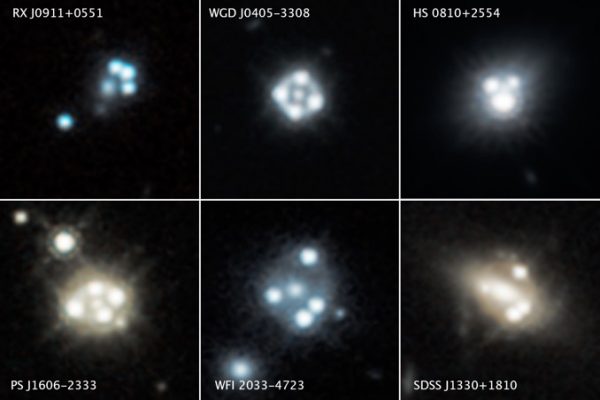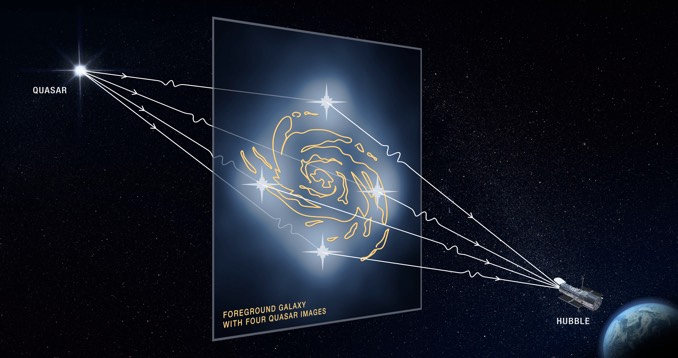Hubble finds evidence for widely held ‘cold dark matter’ theory – Astronomy Now Online

Using the Hubble Space Telescope – and gravitationally lensed quasars – astronomers have found that dark matter can form in much smaller clumps than the galaxy-spanning clouds previously detected, providing strong evidence for the widely accepted “cold dark matter” theory.
Dark matter can be detected indirectly by measuring how its combined gravity affects the motions of stars and galaxies. “Cold” in this case means slow moving. The gravity generated by vast clouds of cold, weakly interacting dark matter particles is thought to provide the glue that keeps galaxies and galaxy clusters from flying apart.
Until now, dark matter concentrations have only been detected in and around medium- to large-size galaxies, prompting theorists to propose theories that include “warm” dark matter, particles that move too fast to merge and form small concentrations. The Hubble observations are consistent with cold dark matter scenarios.
“Dark matter is colder than we knew at smaller scales,” said Anna Nierenberg of NASA’s Jet Propulsion Laboratory in Pasadena, California, leader of the Hubble survey. “Astronomers have carried out other observational tests of dark matter theories before, but ours provides the strongest evidence yet for the presence of small clumps of cold dark matter. By combining the latest theoretical predictions, statistical tools, and new Hubble observations, we now have a much more robust result than was previously possible.”
Nierenberg’s team targeted eight quasars – galaxies hosting active supermassive black holes that emit torrents of brilliant radiation – measuring how light from oxygen and neon gas orbiting those black holes is distorted by the gravity of a massive, much closer galaxy along Hubble’s line of sight.

The eight quasars chosen for the study are almost perfectly aligned with foreground galaxies, producing gravitational lensing that results in multiple images of each quasar. The researchers then compared those views with what would be expected in the absence of dark matter. The result was the detection of dark matter clumping at smaller scales than seen before.
“Imagine that each one of these eight galaxies is a giant magnifying glass,” said team member Daniel Gilman of UCLA. “Small dark matter clumps act as small cracks on the magnifying glass, altering the brightness and position of the four quasar images compared to what you would expect to see if the glass were smooth.”
Said Tommaso Treu of the University of California, Los Angeles: “We made a very compelling observational test for the cold dark matter model and it passes with flying colours.”
“It’s incredible that after nearly 30 years of operation, Hubble is enabling cutting-edge views into fundamental physics and the nature of the universe that we didn’t even dream of when the telescope was launched.”





